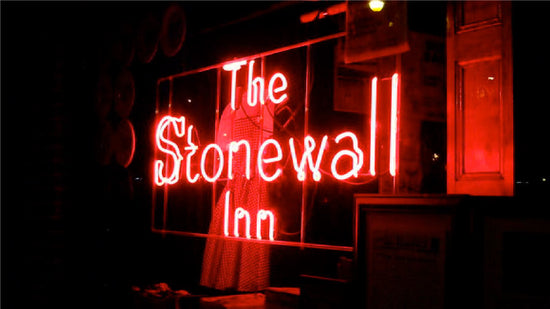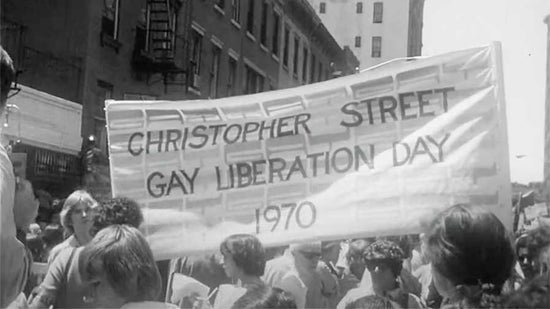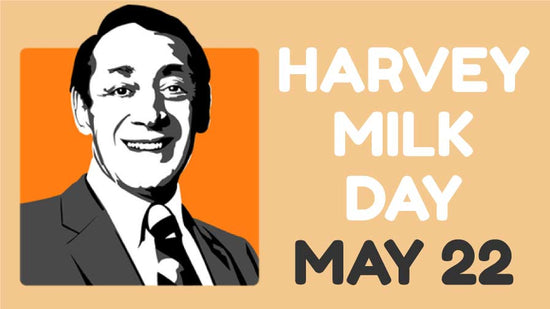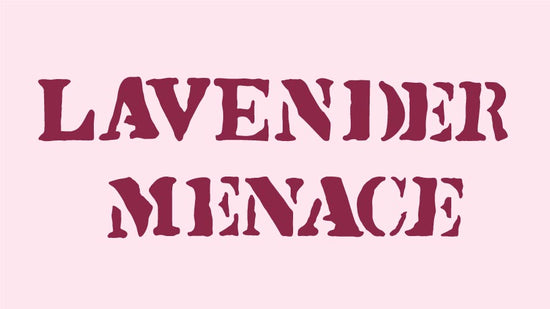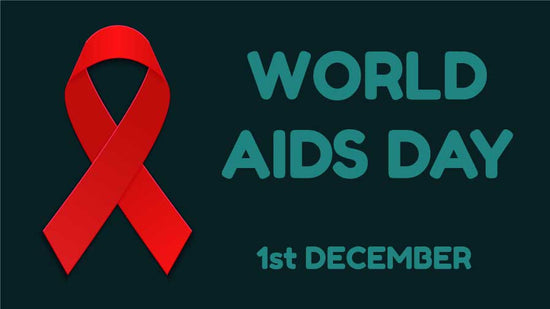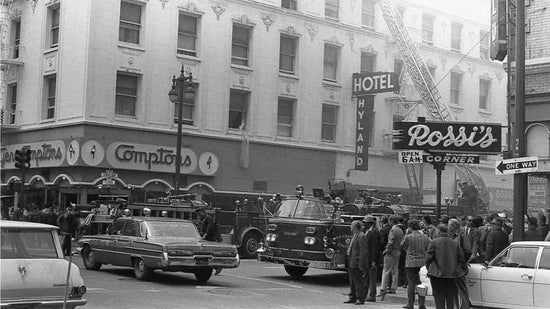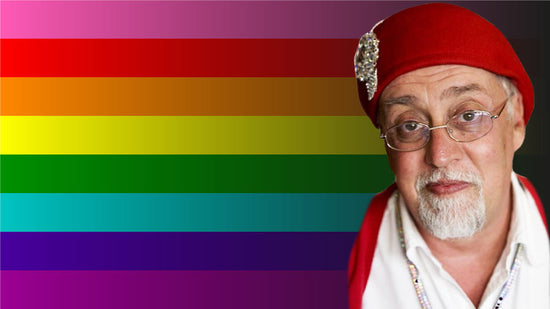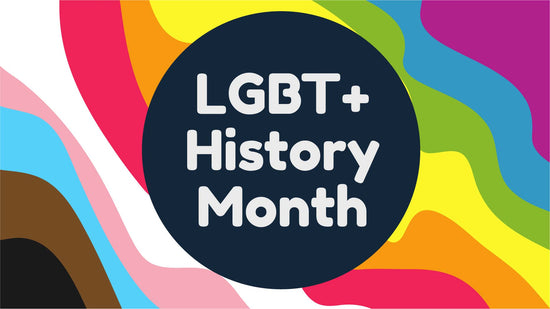Queer Nation: Revolutionising LGBTQ+ Activism

In March 1990 the homophobia around the AIDS epidemic was triggering a staggering rise in violence towards gay, lesbian and bi people. With the backdrop of the media driven hate, a group of queer people met to fight back. Born out of a tumultuous era of activism and anger, Queer Nation emerged as a powerful force for change. Challenging heteronormative culture and institutions and demanding visibility, equality, justice and liberation for queer people.
The Birth of Queer Nation
Queer Nation was founded by four AIDS activists who had been part of ACT UP/NY and were horrified by the massive increase in homophobic violence on the streets of New York prompted by the media manufactured turmoil and rising levels of discrimination. Tom Blewitt, Alan Klein, Michelangelo Signorile and Karl Soehnlein had become frustrated with ACT Up focus only on AIDS and wanted to expand the scope to create a direct action organisation with the aim of ending homophobia and increasing visibility of queer people.
Alan Klein emphasised the importance of visibility and direct action when he reflected on the group's beginnings in an interview with Out Magazine. "We wanted to be confrontational and loud because that's what it took to get people's attention." Klein's words highlight the radical approach taken by Queer Nation activists, who were unapologetic in their demands for equality and justice.
On March 20th they and a diverse group of 60 queer activists met at the Lesbian, Gay, Bisexual and Transgender Community Services Center in New York's Greenwich Village to discuss forming a collective aimed at challenging homophobia and discrimination.
In an interview with The Advocate, Tom Raush summed up the feelings at that first meeting, "We were a group of queer people who were angry and fed up with being invisible and oppressed. There was a sense of urgency and solidarity in the room. We knew we had to take action to make our voices heard."
On April 4th the still unnamed group held its first official meeting to discuss strategies. This sense of urgency and solidarity would become defining characteristics of Queer Nation's activism, as members worked tirelessly to confront prejudice and fight for LGBTQ+ rights. Drawing inspiration from the civil rights movement and feminist activism, Queer Nation adopted direct action tactics and bold rhetoric to demand visibility and rights for queer people.

Queer Activism That Changed History
Queer Nation quickly gained notoriety for its provocative tactics and unapologetic approach to activism. From "zaps" and protests to guerrilla theatre and street demonstrations, Queer Nation made its presence known with it’s provocative and confrontational tactics.
Their first action was only three weeks after the inaugural meeting, when they targeted a straight bar called Flutie’s. One of the goals at the first meeting had been to show straight people that the queer community refused to be confined to gay bars. That queer people should be allowed to socialise and show affection anywhere. These actions became known as “Nights Out”, and often included ‘kiss-ins’ and other deliberately confrontational tactics mocking the normalised behaviour of straight couples to demonstrate the ludicrous discrimination of queer people.
By mid May the group name was officially adopted. The use of Queer was shocking to many, who had suffered from its use as a homophobic weapon for years. But it fitted perfectly with the collective’s confrontational ethos. Which also set them on a course that conflicted with the assimilatory goals of many other LGBTQ+ organisations such as The National Gay And Lesbian Task Force.

Newsweek described Queer Nation as, “The angriest, nerviest in-your-face gay-rights group since ACT UP disrupted mass at St. Patrick's Cathedral in 1989.”
Protesters often infiltrated events, carrying banners and signs with their now famous chant, "We're here! We're queer! Get used to it!", "Queers Bash Back," or “Dykes take over the world”. Their actions sparked controversy and debate but also thrust queer issues into the spotlight, challenging the mainstream to confront its prejudices and biases.
Queer Nation's activism wasn't limited to street protests; the group also utilised art, media, and culture to challenge heteronormative narratives and representations. Through zines, posters, and other forms of creative expression, Queer Nation reclaimed space and visibility for queer voices.
OUR PROTEST COLLECTION
Queer Nation Goes National
Within a month of the New York group starting, San Francisco had its own chapter of Queer Nation. And then LA, Nebraska, Houston, Denver, Utah, Atlanta, Georgia... In fact up to 40 locations around the US. The collective horizontal structure allowed for everyone's voices to be heard and the intersectional goals meant that queer people of colour felt welcome.
Each of the decentralised chapters became active very quickly. But the San Francisco group was, perhaps unsurprisingly, very visible. This group was organised by Mark Duran, his partner Daniel Paiz and fellow activist Steve Mehall. They flyered the Castro and got what some believe were 500 people at their first meeting.
“That first meeting was very, very exciting,” activist Jennifer Junkyard Morris told KQED before adding. “Well—and it was also very cruise-y.”
Some of Queer Nation actions used humour as a key part of their activism. Morris was also a key player in affiliated group Catherine Did it, which discovered that the Michael Douglas movie Basic Instinct had several scenes that portrayed lesbians incredibly negatively. One in which a woman apologises for her lesbian past to the male protagonist, after sex with him seems to have cured her!
The activists discovered there was to be a scene shot close by and released dozens of bags of glitter onto the proposed set. When the crew arrived they discovered it was strewn with a carpet of twinking queerness, which left it unusable.
The Legacy of Queer Nation
Within a couple of years though the rifts started to appear. Various subgroups wanted needs that they saw as important to them to be adopted by the wider collective and these caused conflicts. The four founders distanced themselves and by the end of 1991 much of the collective had dissipated, although Queer Nation still exists and still engages in direct action. Those early members that were part of the vanguard became eminent in many fields of the arts, politics and science.
Though Queer Nation's heyday may have passed, its legacy continues to reverberate within the community and beyond. The movement's tactics and uncompromising stance sparked conversations and debate around key issues and paved the way for progress on issues ranging from marriage equality to transgender rights.
A generation of LGBTQ+ activists and organisers continued to draw inspiration from Queer Nation's legacy, recognizing that they left a blueprint for the power of collective direct action, confrontation and unapologetic advocacy.
But for many younger members of the LGBTQ+ community the impact of Queer Nation can seem pretty distant. But with many of the same homophobic attacks that caused the rise in violence back then being polished off by religious conservatives and trotted out by right wing politicians and media again, this time against trans people initially, but increasingly against the whole LGBTQ+ community now it’s important to revisit their strategies and goals.
In an era marked once again by challenges and threats to LGBTQ+ rights, Queer Nation serves as a reminder of the importance of resistance and resilience. As we set about the task of pushing back and bringing an end to the hate and violence it’s important that we honour the legacy of Queer Nation and all those who have fought to inspire and inform the ongoing fight for queer liberation.



